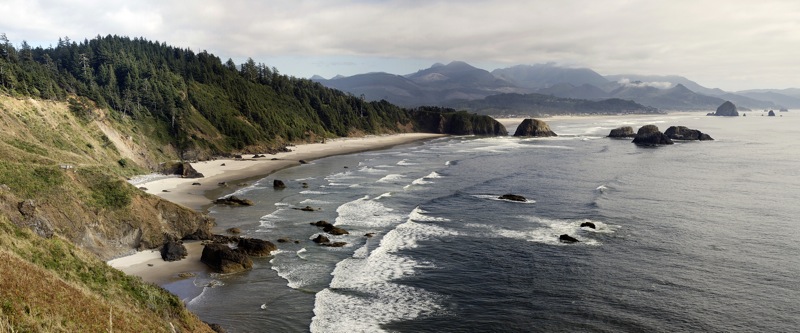Caffeine pollutes Pacific Ocean

 The chilly ocean off America's Pacific Northwest can make for a bracing swim. Earlier today, the water temperature at a place called Port Orford, Oregon sat at a bone jarring 47 degrees F.
The chilly ocean off America's Pacific Northwest can make for a bracing swim. Earlier today, the water temperature at a place called Port Orford, Oregon sat at a bone jarring 47 degrees F.
If that sort of thing doesn't faze you (heck, in Finland they cut holes in frozen Arctic lakes and jump in), there's something else lurking in the water that could give you a jolt: caffeine.
The National Oceanic and Atmospheric Administration (NOAA) reports that researchers have found "elevated levels of caffeine at several sites in Pacific Ocean waters off the coast of Oregon."
Now, in case you're wondering why you've probably never heard this before, the NOAA press release explains that the study was "the first everto look at caffeine contamination off the Oregon coast." (I've added the word "ever" for emphasis, reflecting that I - and perhaps you - am bemusedly wondering why anyone decided to study this in the first place. But I won't ponder).
 Okay, so where does the caffeine come from?
Okay, so where does the caffeine come from?
Well, you might be sorry you asked. The answer could make any intrepid swimmer paddle back to dry land faster than they can say "my cojones shrunk" - if they have cojones that is. Female swimmers can substitute some other expression, perhaps "my tootsies are numb."
Whatever they shout when icy waters turn them blue, the source of the caffeine is, yes, sewage.
In the event you're not connecting the dots I'll get you started: caffeine travels from coffee maker to coffee cup to your welcoming lips to, well, you know the rest.
Scientists from Portland State University and Washington State University suspect two main culprits: septic tanks and storm-induced sewage overflows.
They found some of the highest concentrations of caffeine in low population areas - Carl Washburne State Park in Florence, Ore., and at Cape Lookout. "The results suggest that septic tanks, such as those used at the state parks, may be less effective at containing pollution," the release notes.

Levels also rose elsewhere following a storm "that triggered sewer overflows," it says.
Curiously, the team found low levels of caffeine near large population centers like Astoria/Warrenton and Coos Bay. The press release does not explain why these places seem more resistant to overflows, although the researchers do say that waste water treatment plants in those areas seem to work well.
"Contrary to our prediction, the waste water treatment plants are not a major source of caffeine to coastal waters," states Elise Granek, assistant professor of environmental science and management at Portland State University. "However, onsite waste disposal systems may be a big contributor of contaminants to Oregon's coastal ocean and need to be better studied to fully understand their contribution to pollution of ocean waters."
To help you cope: Next time you see the foamy break of the wave, just imagine you're swimming in a giant bowl of cappuccino. Don't think of that other stuff.
Now, before I completely upset the Oregon tourist board, let me clarify that not all of the state's beach waters are as frigid as Port Orford's 47 degrees, a number which I plucked from NOAA charts. Newport's was 49.3, and Charleston's climbed to 49.5. Alright, Astoria's was a comparatively tepid 69.6 (how does that 20-degree range occur?).
But for comparison, thousands of miles to the east, at Cape May, New Jersey, the ocean thermometer hovered at a bathtub-like 82 degrees. I'm not sure what the caffeine count was there. But I bet the taffy total was high.
Photos: Latte from Mortefot. Septic tank from EPA. Oregon coastline at Ecola State Park from "Cacophony edit by Noodle Snacks." All via Wikimedia.
Water water everywhere on SmartPlanet:
- An offshore oil revival brews in the Gulf
- China's nuclear powered ocean floor mining station drills for oil, gold
- The cost of blunting peak oil
- Lucky strike? Ireland finds oil
- Converting danger into energy: Rwanda to divert lake's lethal gases to power plant
- Big companies neglecting water perils
- Et tu, Brute: Renewable energy?
- Greenpeace dawn raid shuts down Arctic sea rig
- Puma runs ahead in energy and water reporting
This post was originally published on Smartplanet.com